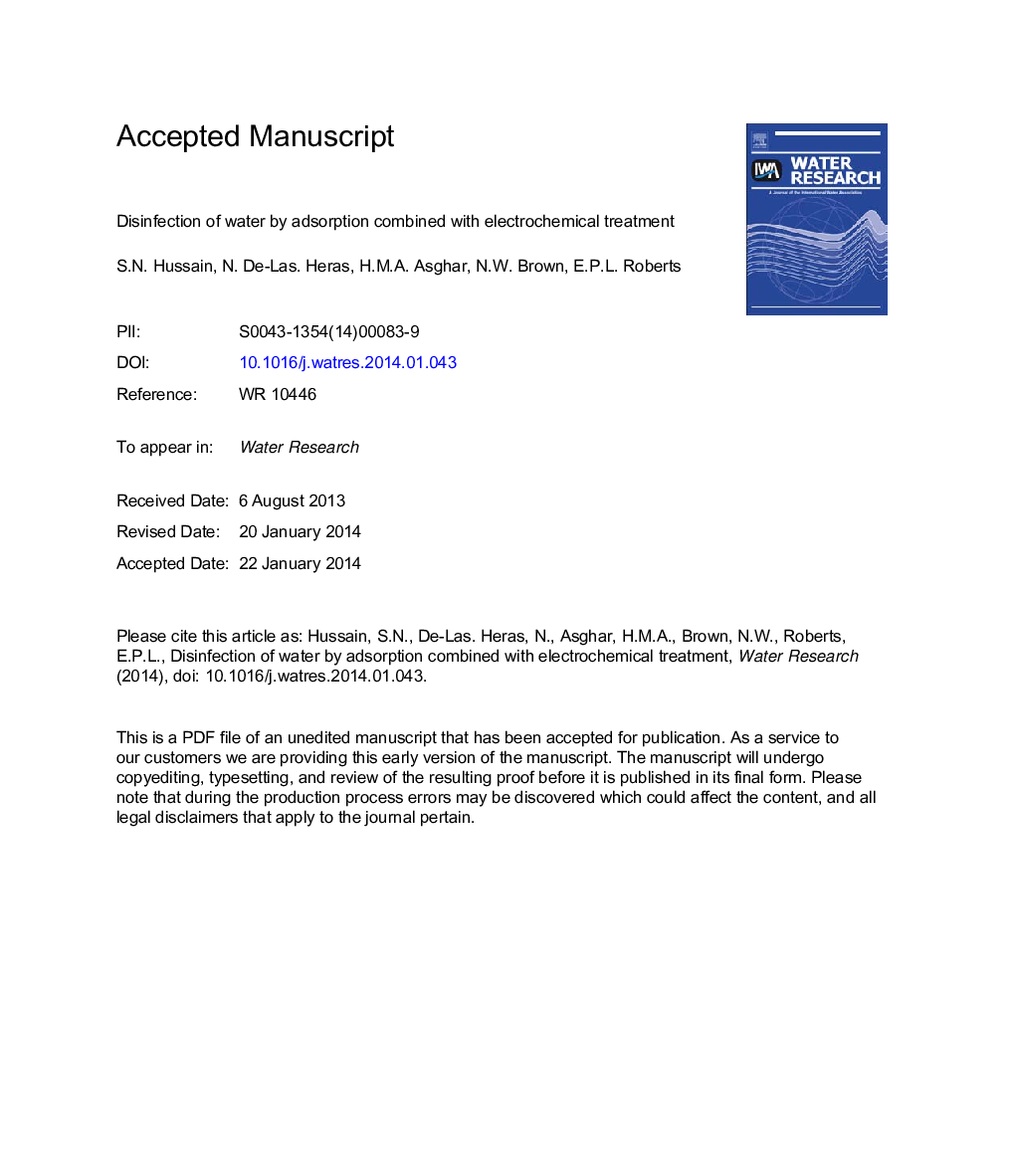| Article ID | Journal | Published Year | Pages | File Type |
|---|---|---|---|---|
| 6367056 | Water Research | 2014 | 38 Pages |
Abstract
The disinfection performance of a unique process of adsorption combined with electrochemical treatment is evaluated. A flake graphite intercalation compound adsorbent was used, which is effective for the removal of organic contaminants and is amenable to anodic electrochemical regeneration. Adsorption of Escherichia coli on the graphite flake was followed by electrochemical treatment under a range of experimental conditions in a sequential batch reactor. The adsorption of E. coli cells was found to be a fast process and was capable of removing >99.98% of cells from solution after 5 min with a ca. 6.5-log10 reduction in E. coli concentration after 10 min. With electrochemical treatment the adsorbent could be reused, with no decrease in E. coli adsorption observed over five cycles. In the presence of chloride, >8.5-log10 reduction of E. coli concentration was achieved. Disinfection was found to be less effective in the absence of chloride. However, selection of appropriate operating conditions enabled effective disinfection in a chloride free system, reducing the potential for formation of disinfection by-products. The energy consumption required to achieve >8.5-log10 disinfection was 2-7 kWh mâ3.
Related Topics
Physical Sciences and Engineering
Earth and Planetary Sciences
Earth-Surface Processes
Authors
S.N. Hussain, N. de las Heras, H.M.A. Asghar, N.W. Brown, E.P.L. Roberts,
